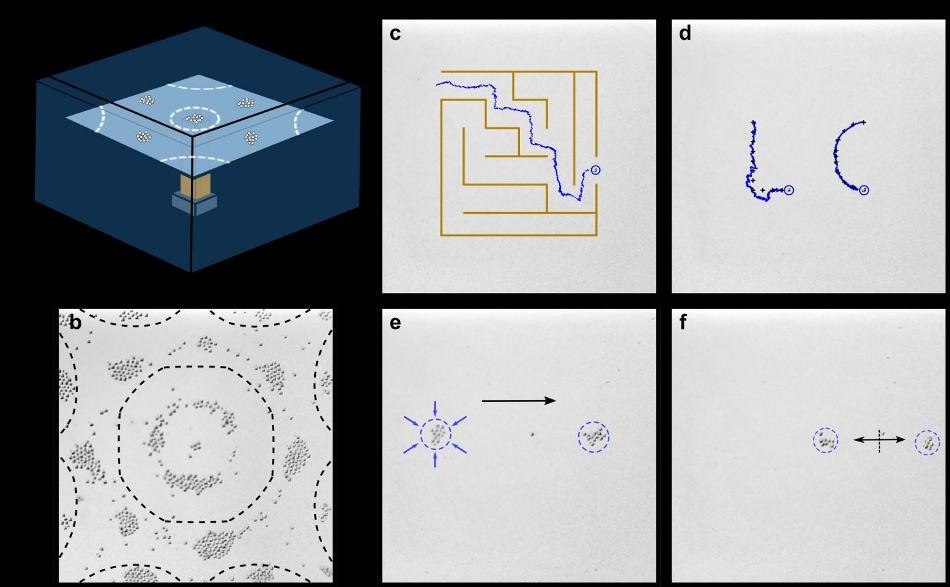May 13 2019
Scientists at Aalto University have found an amazing experiment that can change the opinion about how sound can move particles.
 (a-b) Heavy particles move towards antinodes of a submerged vibrating plate. (c-d) Single particles and (e-f) a swarm of particles move on pre-defined trajectories on the plate by playing carefully-chosen musical notes. (Image credit: Kourosh Latifi)
(a-b) Heavy particles move towards antinodes of a submerged vibrating plate. (c-d) Single particles and (e-f) a swarm of particles move on pre-defined trajectories on the plate by playing carefully-chosen musical notes. (Image credit: Kourosh Latifi)
Their experiment is based on a well-known experiment identified by high school science classrooms throughout the world—the Chladni Plate experiment in which particles move on a vibrating surface. In 1787, Ernst Chladni, who is now called the father of acoustics, was the first to carry out the experiment. The experiment showed that when a plate vibrated at a frequency, heavy particles move toward the regions with less vibration, known as nodal lines.
The experiment has been widely repeated for centuries and has shaped the universal understanding of the movement of heavy particles on a vibrating plate. However, currently, scientists at Aalto University have shown a case in which heavy particles move toward the regions having more vibrations, or antinodes.
This is a surprising result, almost a contradiction to common beliefs.
Quan Zhou, Professor, Aalto University
The scientists placed a silicon plate on a piezoelectric transducer and immersed it in water. They spread sub-millimeter glass spheres on the plate and made the plate to vibrate using signals of various frequencies, producing waves on the plate. Later, they were amazed to notice the particles move toward the antinodes, constituting what they have termed “inverse Chladni patterns.”
An interesting feature is that the system can produce predictable motion at a wide frequency range.
We can move particles at almost any frequency, and we do not rely on the resonance of the plate. This gives us a lot of freedom in motion control.
Quan Zhou, Professor, Aalto University
With the discovery of the new phenomenon, the scientists could precisely control the motion of a single particle and a swarm of particles on the submerged plate. For instance, they moved a particle in a maze on the plate, wrote words containing separate letters, and merged, transported, and separated a swarm of particles by playing various musical notes.
Many procedures in pharmaceutical research and microsystem assembly require the ability to move and manipulate small particles easily. Using just a single actuator to do all these different things, we are opening a path to new particle handling techniques. Additionally, the method can inspire the future factory-on-a-chip systems.
Quan Zhou, Professor, Aalto University